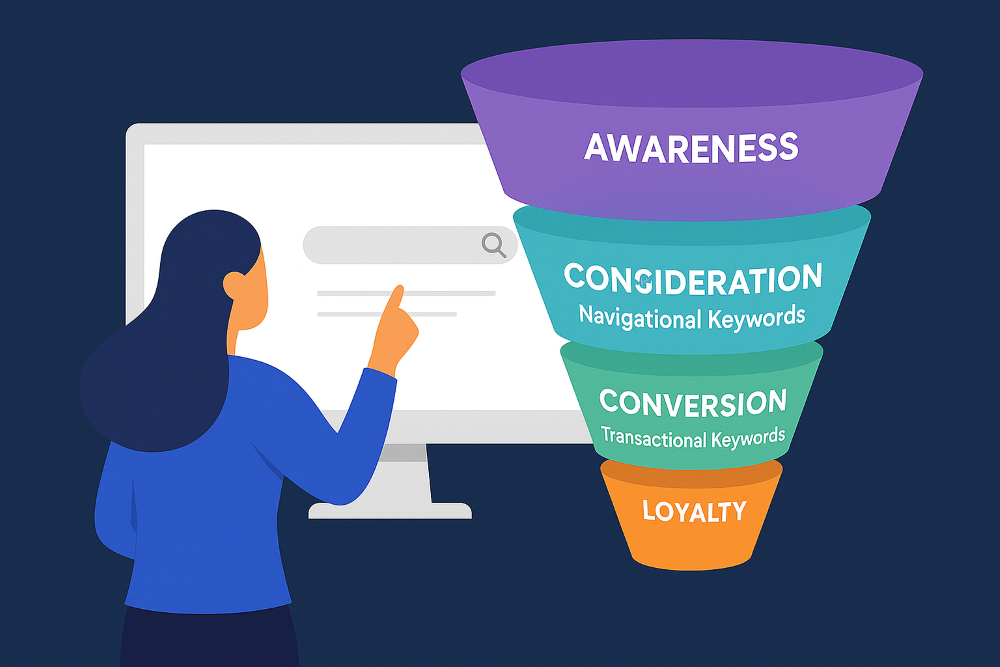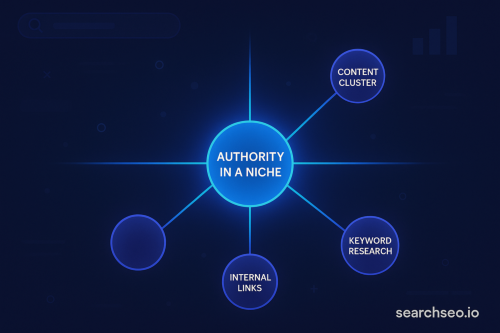If SEO were a road trip, keywords would be the GPS. They tell Google (and your audience) where you’re headed. For beginners: a keyword is simply the word or phrase someone types into a search bar. But here’s the trick—not all keywords are created equal.
Understanding keyword types in SEO and their intent can be the difference between clicks that bounce and clicks that convert. When your content matches what searchers want, you earn higher CTR, rankings, and trust.
Google’s algorithms now interpret keyword intent types. That’s why “running shoes” shows you online shops, but “best running shoes for beginners” surfaces comparison blogs. Same product, totally different intent.

The 4 core keyword intent categories
These are the foundation, recognized by SEMrush, Google, and SE Ranking.
1. Informational keywords
Searches looking for knowledge.
- Examples of keywords for SEO: “how to optimize images for SEO,” “what is domain authority”
- Best for: blog posts, guides, tutorials
- Also called: informational intent keyword SEO
2. Navigational keywords
Searches for a specific website or brand.
- Examples: “LinkedIn login,” “SearchSEO blog”
- Why they matter: Strong branded performance ensures you own your own SEO traffic.
3. Commercial investigation keywords
Searchers comparing or researching products/services.
- Examples: “Ahrefs vs SEMrush,” “best keyword research tools”
- Best for: reviews, comparison pages, case studies
- Also known as: commercial keywords or commercial intent keywords
4. Transactional keywords
High-intent, ready-to-buy terms.
- Examples: “buy SEO tools,” “subscribe to keyword software”
- Best for: product pages, landing pages
- Note: Even a single transactional keyword can drive revenue when used strategically.
Additional keyword categories every SEO should know
Beyond intent, these types of SEO keywords add depth to your strategy.
5. Short-tail keywords
One- to two-word terms.
- Traits: high volume, high competition
- Use for: brand awareness, broad reach
- Example of SEO keywords: “SEO tools,” “keyword research”
6. Long-tail keywords
Three or more words, usually intent-rich.
- Traits: lower volume, higher conversion
- Use for: niche content, voice search optimization
- SEO keywords example: “best free keyword research tool for beginners”
7. Geo-targeted keywords
Location-based searches.
- Examples of keywords for SEO: “SEO agency in Austin,” “plumber near me”
- Why important: critical for local SEO and service-based businesses
8. Branded keywords
Include a brand or product name.
- Types of keyword ownership: owned (your brand) vs competitive (others)
- Use for: brand protection, conquesting campaigns
9. LSI keywords (latent semantic indexing)
Not synonyms—contextual helpers that enrich your topic.
- How to find: Google’s People also ask, SurferSEO, Clearscope
- Use for: depth and topical authority
10. Seasonal keywords
Search demand peaks during specific times.
- Examples of keywords for SEO: “Black Friday SEO deals,” “holiday campaign strategy”
- Use for: campaigns, launches, promotions
11. Evergreen keywords
Steady demand year-round.
- Examples: “SEO best practices,” “content marketing tips”
- Use for: cornerstone and always-relevant content
How to categorize keywords in your SEO strategy
- Use keyword tools like SE Ranking, SEMrush, or Ahrefs to discover different types of keywords.
- Map intent to funnel stages:
- TOFU → informational keyword
- MOFU → commercial keywords or commercial intent keywords
- BOFU → transactional keywords
- Segment your content calendar by keyword type.
- Build internal links between keyword intent clusters to guide users naturally.
💡 Bonus idea: Create a keyword type heatmap to visualize gaps and opportunities.
Mistakes to avoid when using keyword categories
- Chasing only high-volume short-tail terms
- Ignoring search intent mismatch (what are different types of keywords if not intent-driven?)
- Skipping categorization entirely
- Under-optimizing content for the searcher’s purpose
Wrapping up: keyword categories as your SEO GPS
The smarter you categorize, the clearer your SEO roadmap becomes. Blending intent + specificity + context helps you rank across multiple touchpoints of the customer journey.
Take a look at your content library. Are you covering all types of keywords, or leaning too heavily on one? Reorganize with keyword categories in mind and you’ll spot quick wins.


.svg)

.svg)
%201.png)








.svg)